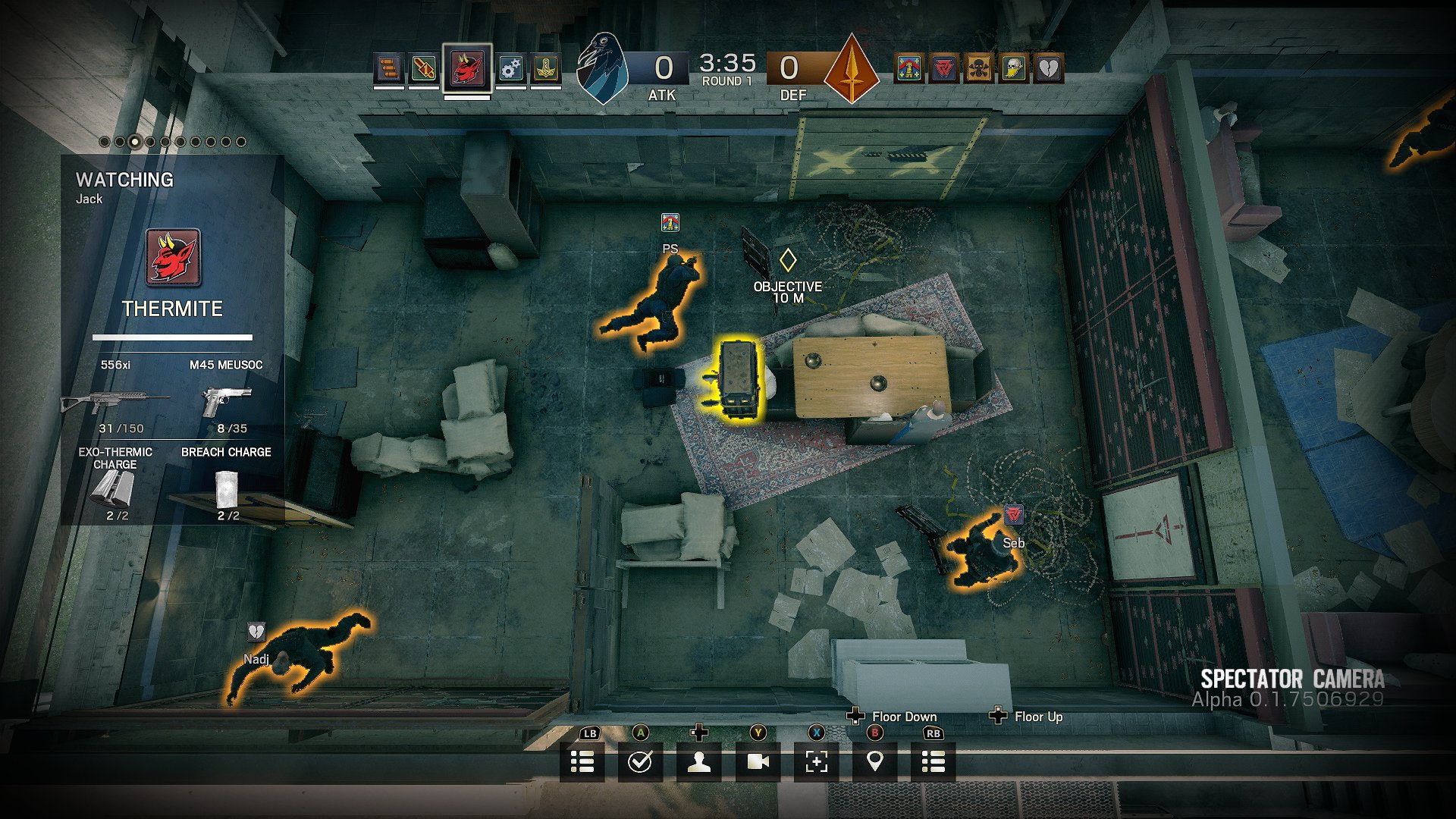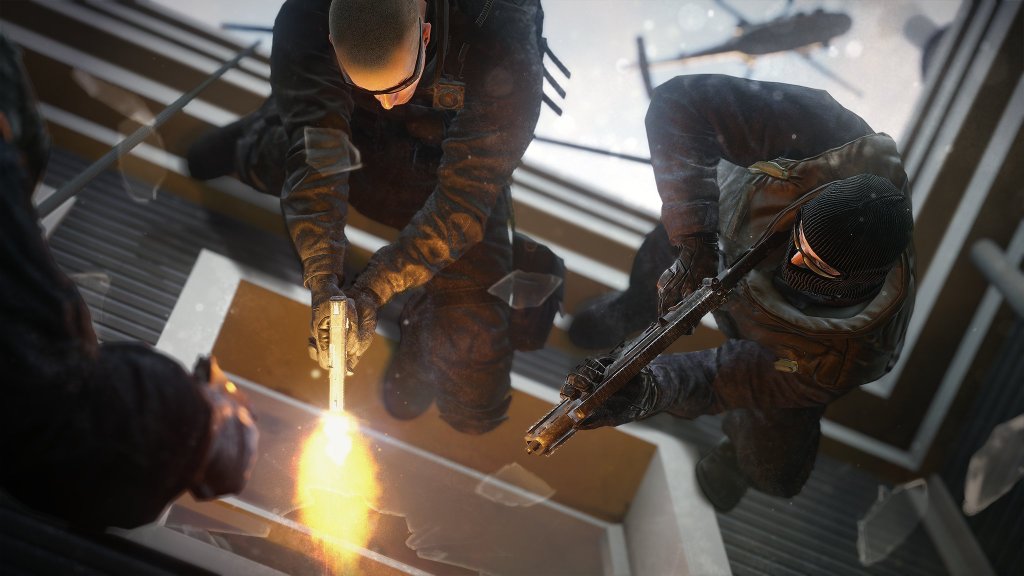Breaching in 3… 2… 1…
For the gamer who enjoys communicating with teammates in their first-person shooters, the modern era hasn't been kind. Tactical shooters have been pushed to the wayside in favor of games that emphasize high rates of encounter and quick respawn.
Enter Tom Clancy's Rainbow Six Siege, a game that focuses on the elements of first-person shooters that have been long forgotten by most competitors. It's a bold statement from Ubisoft who like other big publishers tends to prefer focusing its AAA budgets on proven franchises. However, it's taken a risk here, and for anyone who loves teamwork it's paid off in a big way.
Rainbow Six Siege is a tactical shooter that favors the traditional Attackers vs. Defenders style of play where hostage rescue and bomb defusal are the primary targets. There are five players on each team, one respawn per round, and a serious sense of competition during matches. The similarities that it shares with games like Counter-Strike and Insurgency end there.
The game runs on an AnvilNext engine that features some of the best destructible environments in gaming. This plays a pivotal point in the experience as all defensive locations are set indoor, surrounded by breachable walls and ceilings. The goal of the Attackers is to create points of entry into a defensive perimeter to secure an objective. There are many options for achieving this, ranging from blowing a door down with a Breach Charge, to punching a hole in a wall to see enemies on the other side. Defenders might be able to reinforce walls with steel and place mobile cover, but even those can be destroyed with the right equipment. But before that can happen, the Attackers need to learn about where the objective is located.
At the beginning of a round, both teams participate in a scouting phase where the Attackers are able to command small RC drones that seek to gain information about where enemies and the prized objectives are located, and the Defenders are given time to setup a defensive perimeter. This phase is demonstrative of Rainbow Six Siege's emphasis of teamwork-oriented play. Locating an objective is only a small piece of data. What is important is that Attackers share intelligence in an effort to gain a tactical advantage before heading into the heavily-guarded objective area where Defenders await. Meanwhile, Defenders need to have a sound strategy to deal with the inevitable breaches of the enemy team which cause pandemonium. Communication is a must to avoid distress and be prepared for the worst.
Every team member of the Attackers and Defenders assume control of one of 10 Operators available to each side. These are unlocked using currency gained from playing the game, which can also be used to customize their available weapons. Each has a distinct look as well as a personal gadget and equipment options. For example, in the case of the Defenders two options are Jager and Kapkan. Jager is capable of placing Active Defense which will shoot down grenades that enter a room, and Kapkan can place traps at entryways. On the Attackers side, Thermite can breach reinforced walls, while Blitz comes equipped with a massive Riot Shield that has a built-in flashbang component. The number of options creates great variety in matches that each feel different than the last, while allowing for players to find their favored style of play.
Rainbow Six Siege's large library of equipment, Operators, and complex map layouts are cause for a high skill ceiling. The difference between a new player and a veteran is significant, providing hardcore players with reason to invest hours in learning the intricacies of the game—mid-round drone usage, equipment placement, spam points, etc.
Once you're in a firefight, the gunplay feels good but not great. Shooting is mostly "aim down sight" driven, with a slightly longer delay than most modern first-person shooters offer, resulting in an unexpected learning curve. Guns tend to have relatively low recoil and present moderate feedback in the way of audio and visual cues. Unfortunately, the game's netcode can be unreliable with its high tick-rate servers. Peeker's advantage is in full force, resulting in some mind-boggling deaths for players defending a corner.
Map design is one of Rainbow Six Siege's strong suits. The quantity of maps is around where you'd expect from a modern shooter, but most of them are impeccably designed with fantastic attention to detail and great layouts. The map design and number of objective locations are a major reason why the gameplay is enjoyable in the long run, buffering the game's mostly multiplayer-only format.
You can become familiar with Rainbow Six Siege's gameplay style by playing one of several Situations. These serve as a means for learning how to use some of the game's equipment and how to tackle objectives. They're single-player, so they're a great place of refuge when you want to learn the ropes without dealing with the harsh online competition. They also reward you with currency, providing means to purchase more Operators and equipment.
For players who end up playing for long periods of time, the real addiction can be found in Ranked play where a ladder system rewards those who commit themselves to improving their communication and tactical readiness. It makes an effort to pair players with similarly skilled opponents and to punish bad-mannered players who leave matches—the perfect combination for anyone serious about the game. There's also a Terrorist Hunt mode which places players against competent A.I. However, it's missing some of the intensity of competing against other players.
Rainbow Six Siege's presentation deserves appreciation. Character models and animations are true-to-life, making confrontations reminiscent of great action films. Maps are decorated with tremendous detail, much of which is destructible. Fantastic audio design makes explosions and gunfire reverberate through environments, leaving Defenders anxious. Ubisoft went even as far as making videos that introduce Operators using beautiful 3D animations when purchased. It's a game full of nice touches that make it feel refined when you aren't caught by one of its annoying bugs, especially the audio cutting out.
Rainbow Six Siege was designed with a certain type of gamer in mind. While it bears the Rainbow Six name, it's quite different in format from previous titles in the franchise and foregoes the popular trend of "entertain everyone" for a highly-focused environment. Due to this, it sacrifices broad appeal for something frantic, addictive, and fun for the gamer who enjoys communicating with teammates. It might not have the gunplay that many shooter fans look for, but each time a wall is breached excitement galvanizes the senses, providing something unlike any other game on the market.
-
Destructible environments are used to the fullest
-
Strong cast of Operators
-
Varied and well-tuned map layouts
-
Memorable presentation, including Operator videos
-
Engrossing sound design
-
Mildly unpredictable and frustrating gunplay
-
Nothing to keep single-player gamers occupied
-
Minor but annoying gameplay and audio bugs
Rainbow Six Siege
-
Rainbow Six Siege #1

-
Rainbow Six Siege #2
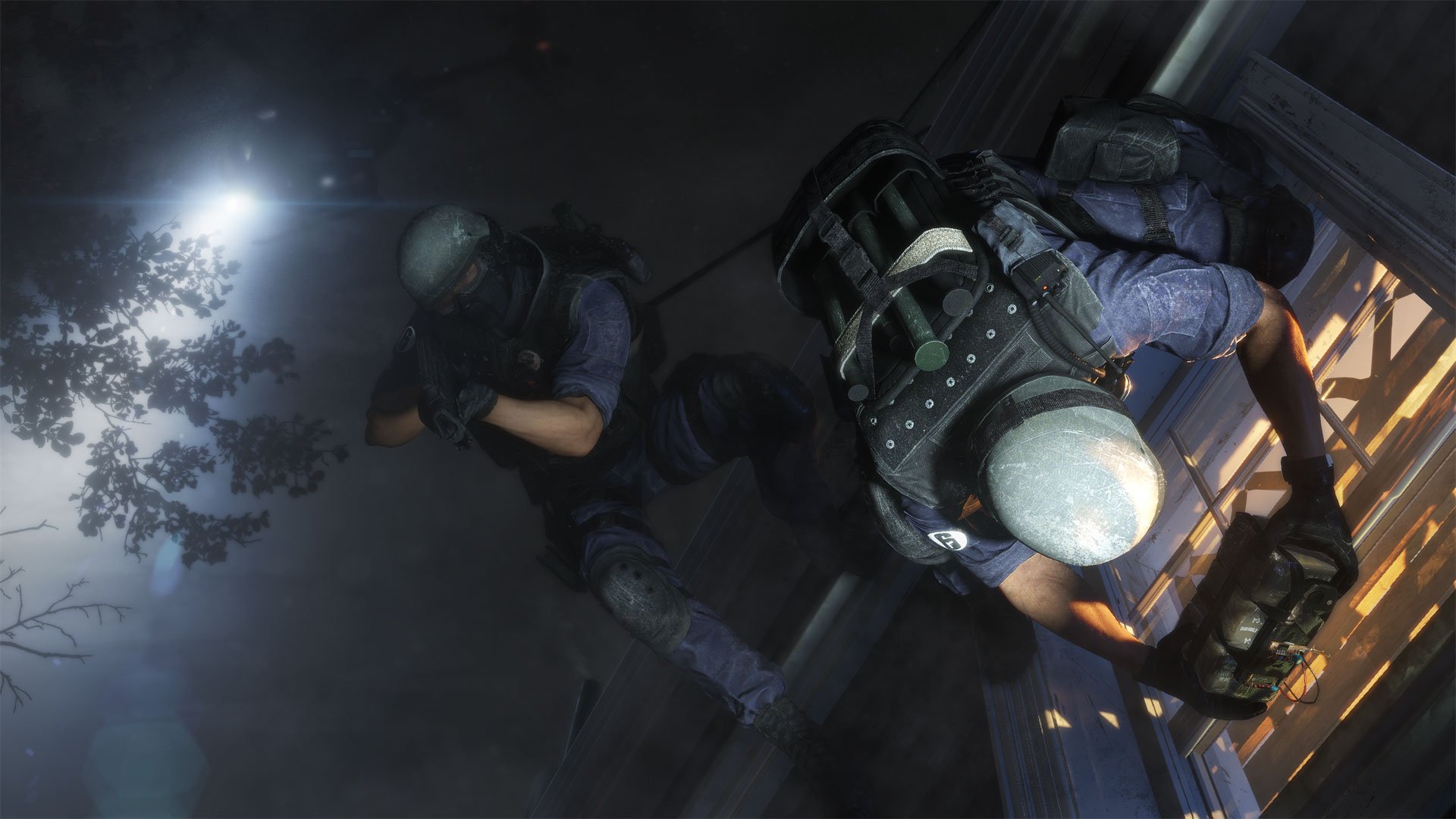
-
Rainbow Six Siege #3

-
Rainbow Six Siege #4
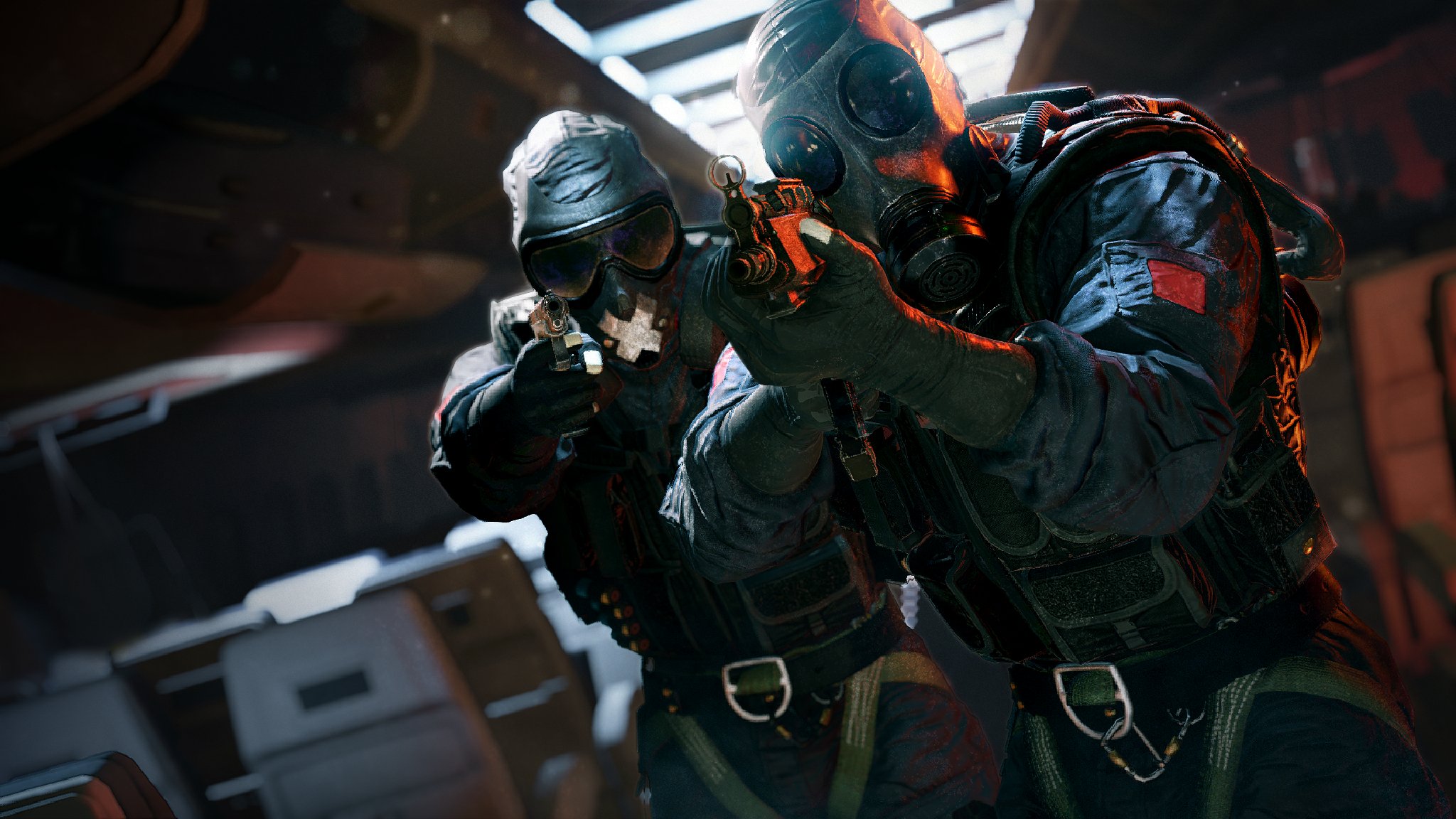
-
Rainbow Six Siege #5

-
Rainbow Six Siege #6

-
Rainbow Six Siege #7
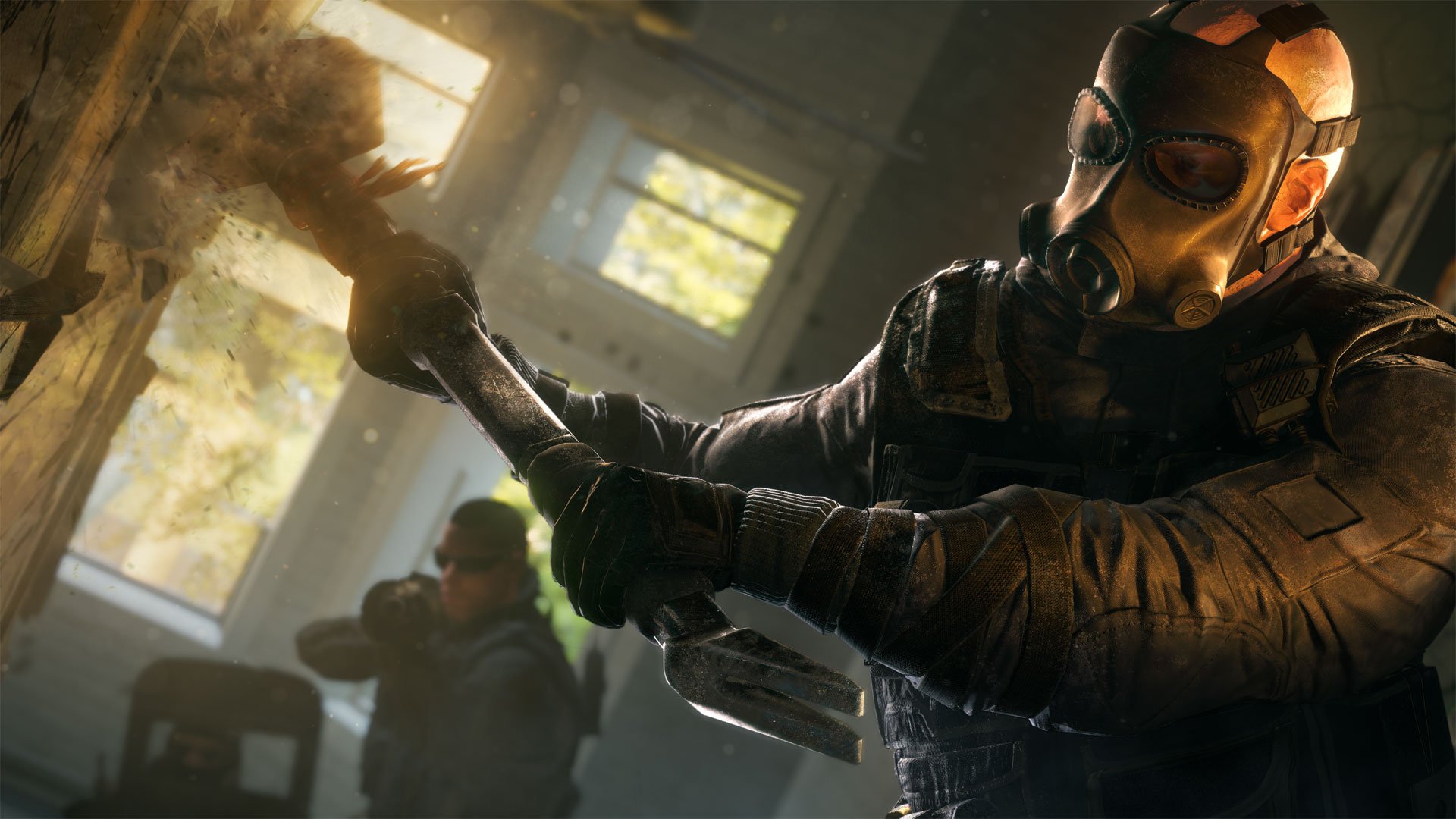
-
Rainbow Six Siege #8
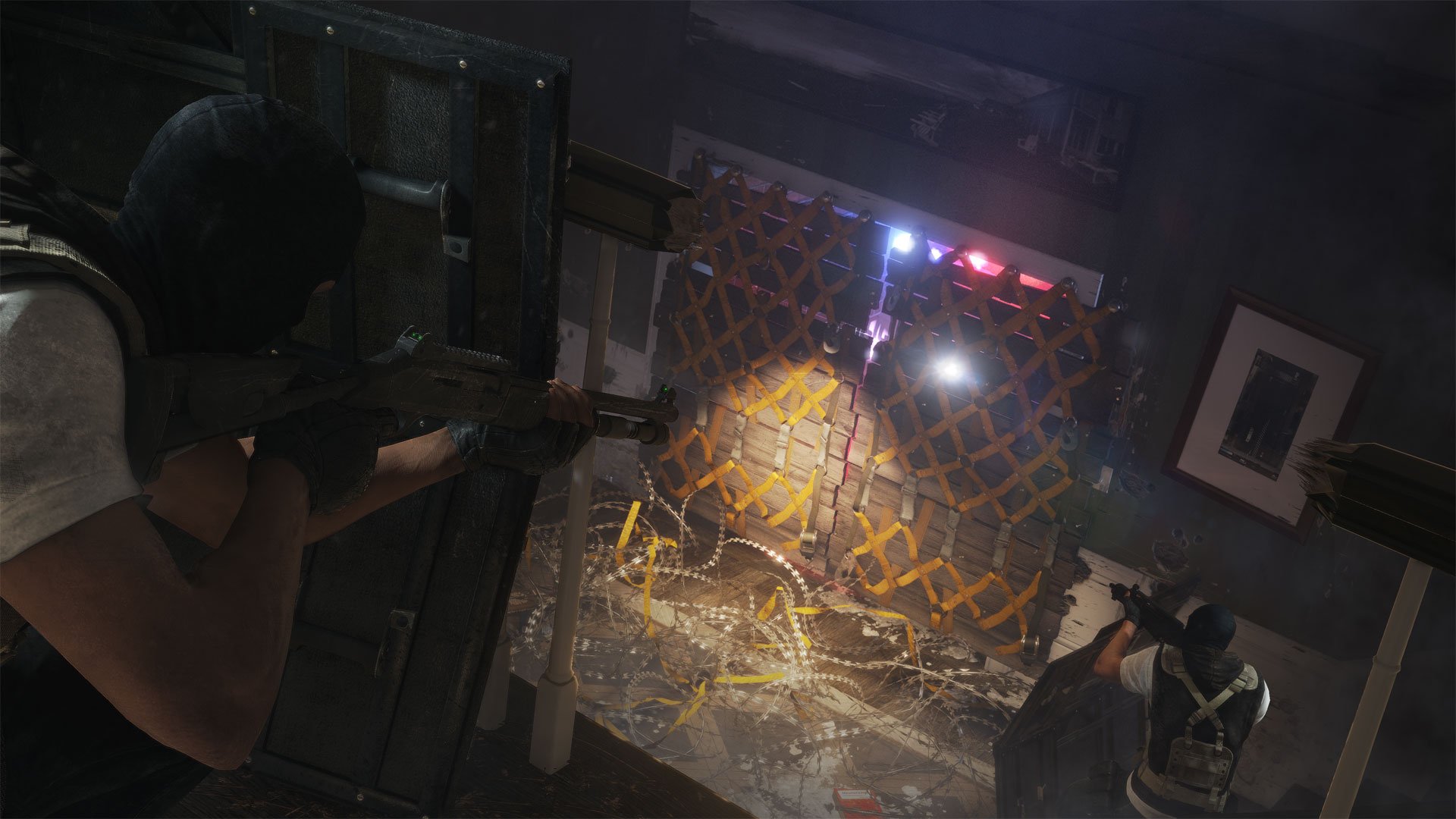
-
Rainbow Six Siege #9
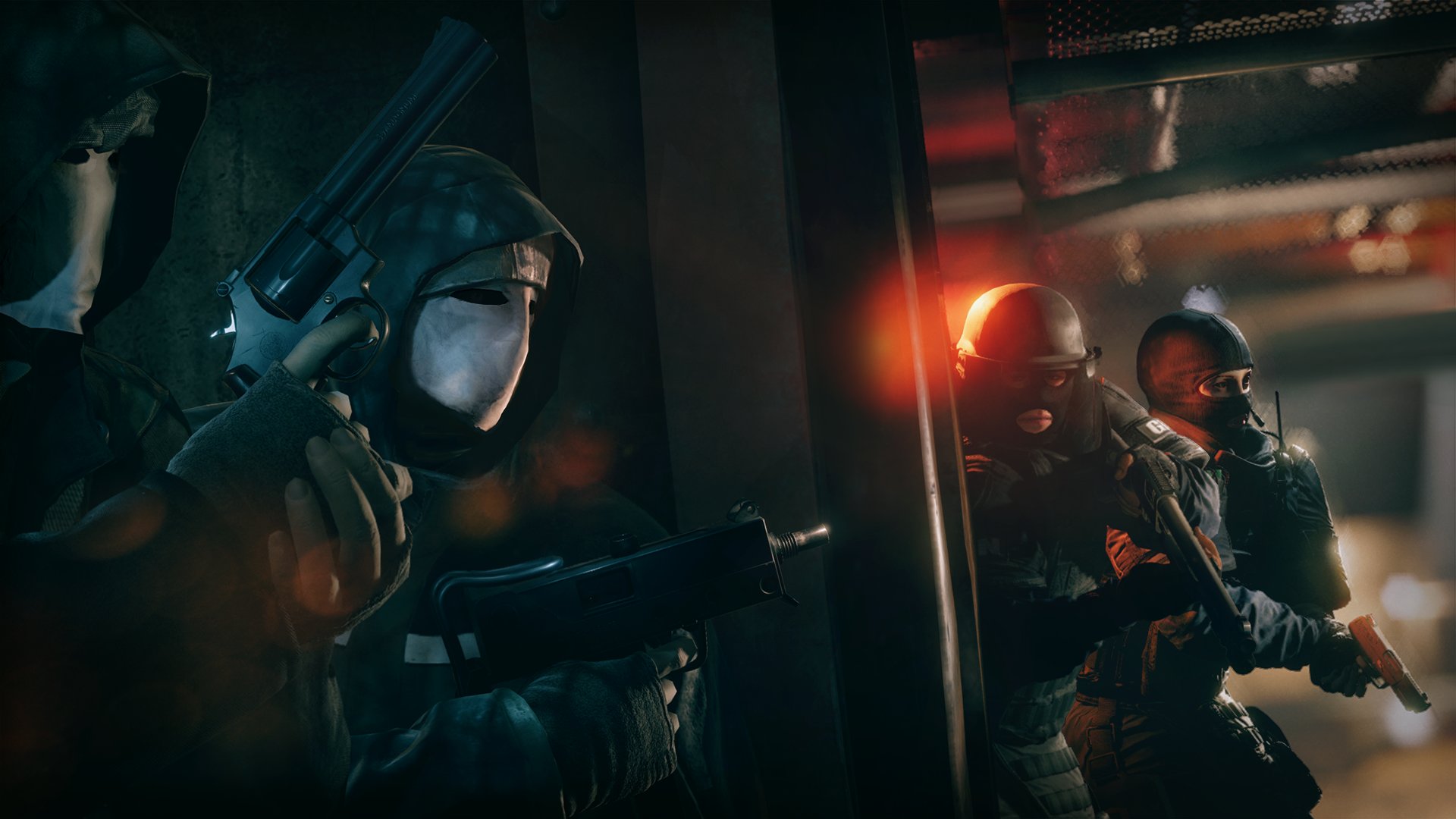
-
Rainbow Six Siege #10

-
Rainbow Six Siege #11
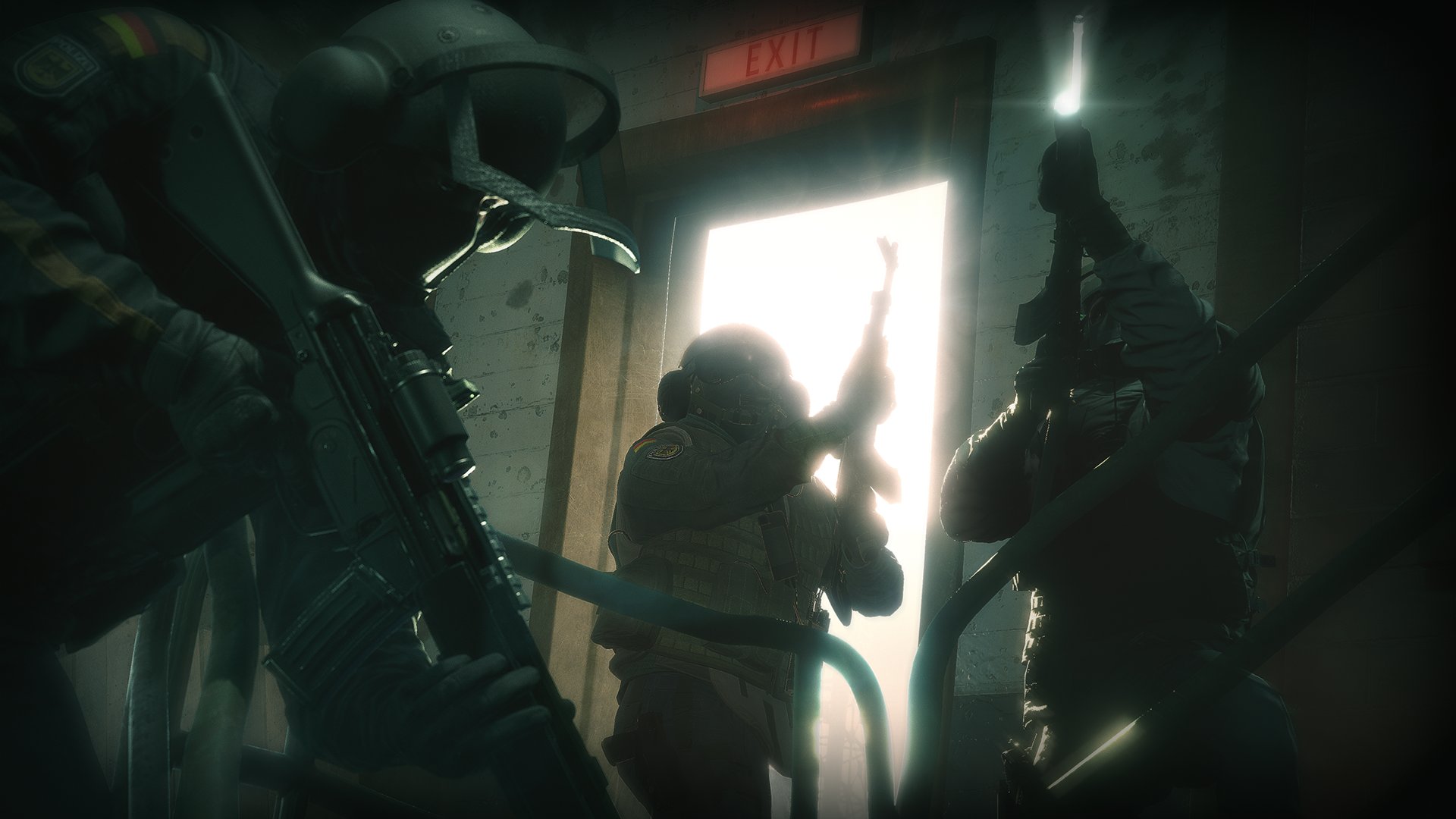
-
Rainbow Six Siege #12
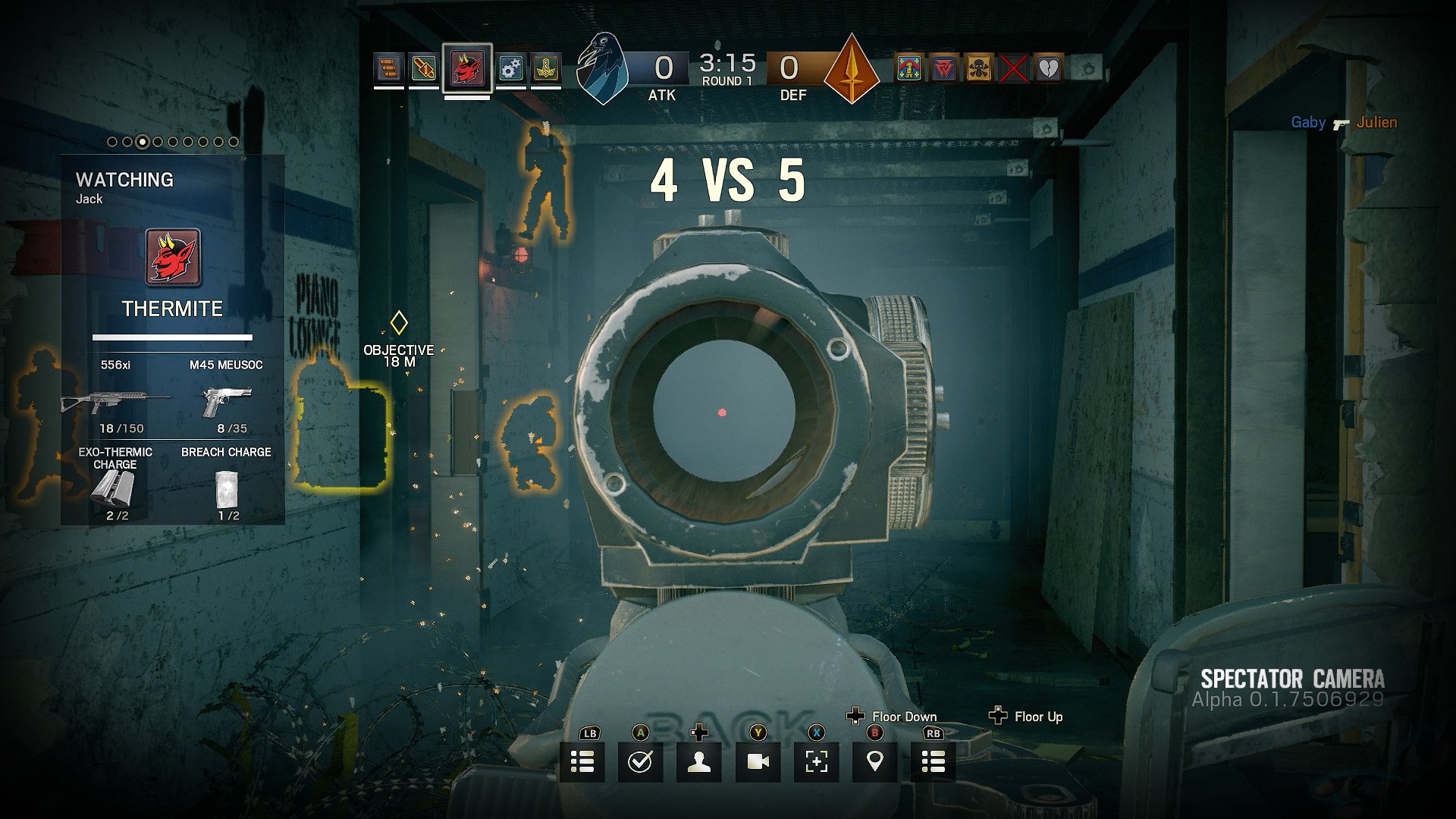
-
Rainbow Six Siege #13
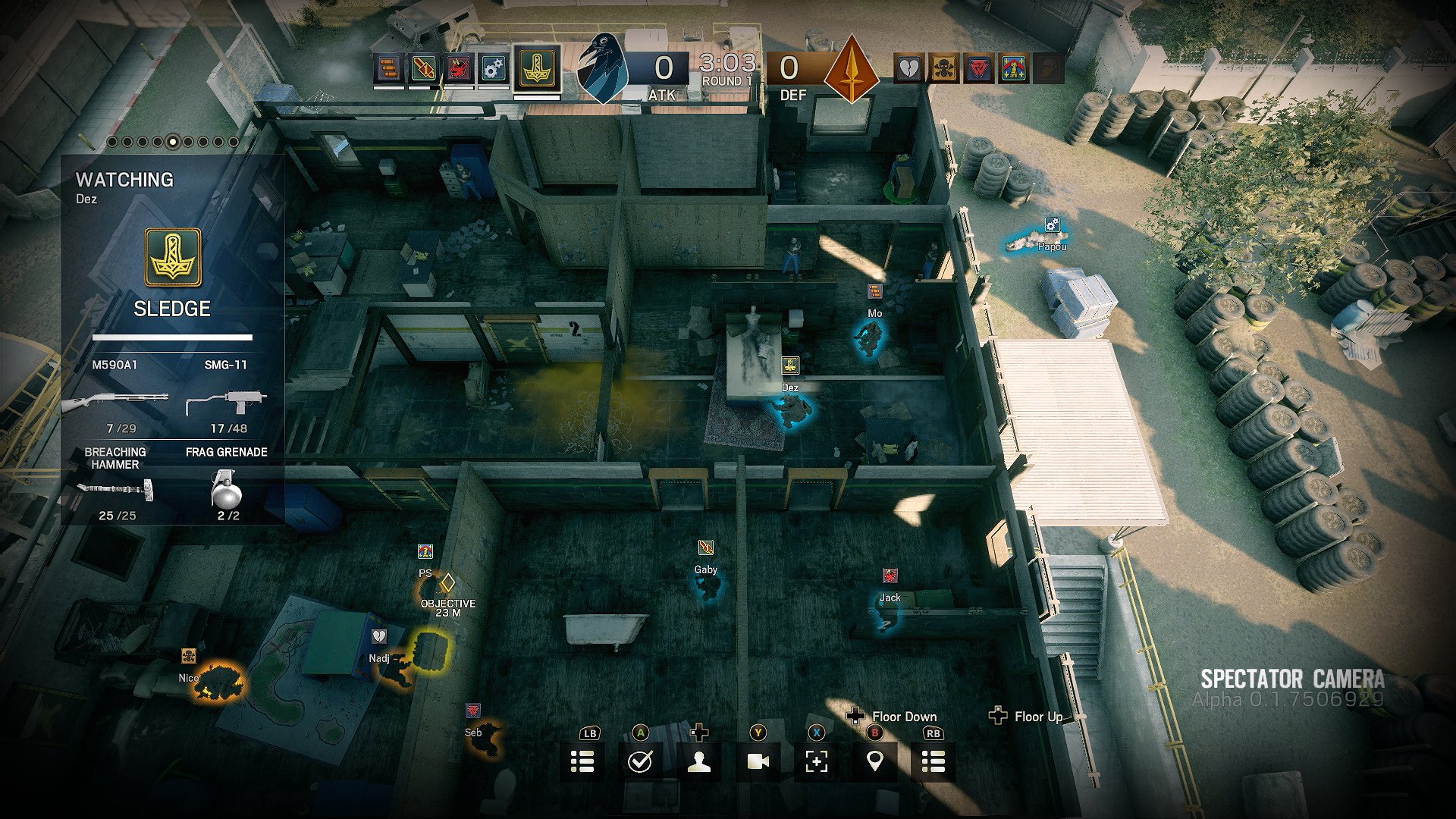
-
Rainbow Six Siege #14
